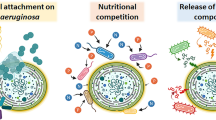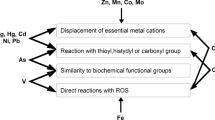Abstract
Antibiotic residues pose a threat to the health of aquatic organisms. The effects and accumulation of antibiotic ciprofloxacin (CIP) in a floating macrophyte (Eichhornia crassipes) under hydroponic conditions were investigated. It was found that E. crassipes exposure to CIP (< 1000 μg L−1) could maintain a stable photosynthesis efficiency. In response to CIP stress, catalase and peroxidase activities of leaves were 7.24–37.51 nmol min−1 g−1 and 98.46–173.16 U g−1, respectively. The presence of CIP did not inhibit the growth of the plant. After 14 days of exposure, tender leaves became white and withered, ascribed to the decline of chlorophyll content and chlorophyll fluorescence parameters. The CIP concentrations, absorbed by E. crassipes, were highest in the roots, followed by white aerial parts and green aerial parts at CIP concentrations of 100 and 1000 μg L−1. These findings demonstrated that E. crassipes could absorb and tolerate CIP in a limited time-scale and imply an alternative solution for phytoremediation in water bodies contaminated with antibiotics.



Similar content being viewed by others
References
Aristilde L, Melis A, Sposito G (2014) Inhibition of photosynthesis by a fluoroquinolone antibiotic. Environ Sci Technol 44(4):1444–1450
Azanu D, Mortey C, Darko G, Weisser JJ, Styrishave B, Abaidoo RC (2016) Uptake of antibiotics from irrigation water by plants. Chemosphere 157:107–114
Babić S, Periša M, Škorić I (2013) Photolytic degradation of norfloxacin, enrofloxacin and ciprofloxacin in various aqueous media. Chemosphere 91(11):1635–1642
Cao ZZ, Liu R, Dong ZL, Yang XP, Chen YD (2015) The effect of sarafloxacin on cu/znsod structure and activity. Spectrochim Acta 136:601–606
Carreras I, Castellari M, García RJA, Guerrero L, Estevegarcia E, Sárraga C (2004) Influence of enrofloxacin administration and alpha-tocopheryl acetate supplemented diets on oxidative stability of broiler tissues. Poult Sci 83(5):796–802
Chuang YH, Zhang Y, Zhang W, Boyd SA, Li H (2015) Comparison of accelerated solvent extraction and quick, easy, cheap, effective, rugged and safe method for extraction and determination of pharmaceuticals in vegetables. J Chromatogr A 1404:1–9
Dan A, Yang Y, Dai YNV, Chen CX, Wang SY, Tao R (2013) Removal and factors influencing removal of sulfonamides and trimethoprim from domestic sewage in constructed wetlands. Bioresour Technol 146:363–370
Dettenmaier EM, Doucette WJ, Bugbee B (2008) Chemical hydrophobicity and uptake by plant roots. Environ Sci Technol 43:324–329
Du J, Zhao H, Liu S, Xie H, Wang Y, Chen J (2017) Antibiotics in the coastal water of the south yellow sea in china: occurrence, distribution and ecological risks. Sci Total Environ 595:521–527
Ebert I, Bachmann J, Kühnen U, Küster A, Kussatz C, Maletzki D (2011) Toxicity of the fluoroquinolone antibiotics enrofloxacin and ciprofloxacin to photoautotrophic aquatic organisms. Environ Toxicol Chem 30(12):2786–2792
Elmolla ES, Chaudhuri M (2010) Comparison of different advanced oxidation processes for treatment of antibiotic aqueous solution. Desalination. 256(1–3):43–47
Evansroberts KM, Mitchenall LA, Wall MK, Leroux J, Mylne JS, Maxwell A (2011) DNA gyrase is the target for the quinolone drug ciprofloxacin in Arabidopsis thaliana. J Biol Chem 291(7):3136–3144
Fu H, Li X, Wang J, Lin P, Chen C, Zhang X (2017) Activated carbon adsorption of quinolone antibiotics in water: performance, mechanism, and modeling. J Environ Sci (China) 56(6):145–152
Gomes MP, Marques TCLLSM, Martins GA, Carvalho MML, Soares AM (2013) Cd-tolerance markers of Pfaffia glomerata (Spreng.) Pedersen plants: anatomical and physiological features, Braz. J. Plant Physiol 24:293–304
Gomes MP, Goncalves CA, De Brito JCM, Souza AM, Vieira DSCF, Bicalho EM, Figueredo CC, Garcia QS (2017) Ciprofloxacin induces oxidative stress in duckweed (lemna minor L.): implications for energy metabolism and antibiotic-uptake ability. J Hazard Mater 328:140–149
Gomes MP, Jcm DB, Mml CC, Mr RDC, Garcia QS, Figueredo CC (2018) Responses of the nitrogen-fixing aquatic fern azolla to water contaminated with ciprofloxacin: impacts on biofertilization. Environ Pollut 232:293–299
Gomes MP, Richardi VS, Bicalho EM, Da Rocha DC, Navarro-Silva MA, Soffiatti P, Garcia QS, Anna-Santos BFS (2019) Effects of ciprofloxacin and roundup on seed germination and root development of maize. Sci Total Environ 651:2671–2678
Gujarathi NP, Haney BJ, Linden JC (2005) Phytoremediation potential of myriophyllum aquaticum and pistia stratiotes to modify antibiotic growth promoters, tetracycline, and oxytetracycline, in aqueous wastewater systems. Int J Phytoremediat 7(2):99–112
Guna VK, Ilangovan M, Reddy N (2017) Water hyacinth: a unique source for sustainable materials and products. ACS Sustain Chem Eng 5(6):4478–4490
Huang XD, El-Alawi Y, Penrose DM, Glick BR, Greenberg BM (2004) Responses of three grass species to creosote during phytoremediation. Environ Pollut 130(3):453–463
Jia E, Li Z, Xue Y, Jiang G, Li X, Liu W (2017) Effects of dietary fructooligosaccharide on the growth, antioxidants, immunity and disease resistance of Chinese mitten crab. Aquaculture. 481:154–161
Kasahara M, Kagawa T, Oikawa K, Suetsugu N, Miyao M, Wada M (2002) Chlomplast avoidance movement reduces photodamage in plants. Nature 420(6917):829–832
Kümmerer K (2009) Antibiotics in the aquatic environment - a review - part ii. Chemosphere. 75(4):435–441
Li HS (2000) Principles and techniques of plant physiological experimnent. Higher Education Press, Beijing, pp 119–120
Li ZJ, Xie XY, Zhang SQ, Liang YC (2011) Negative effects of oxytetracycline on wheat (Triticum aestivum L.) growth, root activity, photosynthesis, and chlorophyll contents. Agr. Sci. China. 10(10):1545–1553
Liang Y, Zhu H, Bañuelos G, Shutes B, Yan B, Cheng X (2018) Removal of sulfamethoxazole from salt-laden wastewater in constructed wetlands affected by plant species, salinity levels and co-existing contaminants. Chem Eng J 341:462–470
Liu L, Liu YH, Liu CX, Wang Z, Dong J, Zhu GF (2013) Potential effect and accumulation of veterinary antibiotics in Phragmites australis, under hydroponic conditions. Ecol Eng 53(2):138–143
Madikizela LM, Ncube S, Chimuka L (2018) Uptake of pharmaceuticals by plants grown under hydroponic conditions and natural occurring plant species: a review. Sci Total Environ 636:477–486
Malakootian M, Balarak D, Mahdavi Y, Sadeghi S, Amirmahani N (2015) Removal of antibiotics from wastewater by Azolla filiculoides: kinetic and equilibrium studies. Int J Anal Pharm Biomed Sci 4:105–113
Maul JD, Schuler LJ, Belden JB, Whiles MR, Lydy MJ (2006) Effects of the antibiotic ciprofloxacin on stream microbial communities and detritivorous macroinvertebrates. EnvironToxicol Chem 25(6):1598–1606
Michelini L, Meggio F, La RN, Ferro S, Ghisi R (2012) Accumulation and effects of sulfadimethoxine in Salix fragilis L. plants: a preliminary study to phytoremediation purposes. Int. J. Phytoremediat. 14(4):388–402
Odendaal C, Seaman MT, Kemp G, Patterton H, Patterton H-G (2015) An LC-MS/MS based survey of contaminants of emerging concern in drinking water in South Africa. S Afr J Sci 111:4–6
Picó Y, Andreu V (2007) Fluoroquinolones in soil—risks and challenges. Anal Bioanal Chem 387(4):1287–1299
Rezania S, Ponraj M, Talaiekhozani A, Mohamad SE, Mohd Fadhil MD, Taib SM (2015) Perspectives of phytoremediation using water hyacinth for removal of heavy metals, organic and inorganic pollutants in wastewater. J Environ Manag 163:125–133
Sarmah AK, Meyer MT, Boxall AB (2006) A global perspective on the use, sales, exposure pathways, occurrence, fate and effects of veterinary antibiotics (vas) in the environment. Chemosphere. 65(5):725–759
Sharma V, Kumar RV, Pakshirajan K, Pugazhenthi G (2017) Integrated adsorption-membrane filtration process for antibiotic removal from aqueous solution. Powder Technol 321:259–269
Smirnoff N (1995) Antioxidant systems and plant response to the environment. BIOS Scientific Publishers, Oxford, pp 217–243
Song C, Li L, Zhang C, Qiu L, Fan L, Wu W (2017) Dietary risk ranking for residual antibiotics in cultured aquatic products around Tai lake, China. Ecotoxicol Environ Saf 144:252–257
Starkov AA, Fiskum G (2001) Myxothiazol induces H2O2 production from mitochondrial respiratory chain. Biochem Biophys Res Commun 281:645–650
Susarla S, Medina VF, Mccutcheon SC (2002) Phytoremediation: an ecological solution to organic chemical contamination. Ecol Eng 18(5):647–658
Talla V, Veerareddy PR (2011) Oxidative stress induced by fluoroquinolones on treatment for complicated urinary tract infections in Indian patients. J Young Pharmacists 3(4):304–309
Thuy HT, Nga LP, Loan TT (2011) Antibiotic contaminants in coastal wetlands from Vietnamese shrimp farming. Environ Sci Pollut Res Int 18(6):835–841
Thuy HT, Loan TT, Nga LP (2013) A preliminary study on the phytoremediation of antibiotic contaminated sediment. Int J Phytoremediat 15(1):65–76
Wall MK, Mitchenall LA, Maxwell A (2004) Arabidopsis thaliana DNA gyrase is targeted to chloroplasts and mitochondria. PNAS. 101(20):7821–7826
Walter A, Rascher U, Osmond B (2003) Transitions in photosynthetic parameters of midvein and interveinal regions of leaves and their importance during leaf growth and development. Plant Biol (Stuttg) 6:184–191
Wan J, Guo P, Zhang S (2014) Response of the cyanobacterium Microcystis flos-aquae to levofloxacin. Environ Sci Pollut Res 21(5):3858–3865
Xian Q, Hu L, Chen H, Chang Z, Zou H (2010) Removal of nutrients and veterinary antibiotics from swine wastewater by a constructed macrophyte floating bed system. J Environ Manag 91(12):2657–2661
Xiong JQ, Kurade MB, Kim JR, Roh HS, Jeon BH (2017) Ciprofloxacin toxicity and its co-metabolic removal by a freshwater microalga Chlamydomonas mexicana. J Hazard Mater 323(Pt A):212–219
Xu JT, Jian Z, Xie H, Cong JL, Nan B, Zhang CL (2010) Physiological responses of phragmites australis to wastewater with different chemical oxygen demands. Ecol Eng 36(10):1341–1347
Xu J, Zhang Y, Zhou C, Guo C, Wang D, Du P, Luo Y, Wan J, Meng W (2014) Distribution, sources and composition of antibiotics in sediment, overlying water and pore water from Taihu Lake, China. Sci Total Environ 497–498:267–273
Yan C, Yang Y, Zhou J, Liu M, Nie M, Shi H, Gu L (2013) Antibiotics in the surface water of the Yangtze Estuary: occurrence, distribution and risk assessment. Environ Pollut. 175:22–29.
Yang Y, Ok YS, Kim K-H, Kwon EE, Tsang YF (2017a) Occurrences and removal of pharmaceuticals and personal care products (PPCPs) in drinking water and water/sewage treatment plants: a review. Sci Total Environ 596–597:303–320
Yang Y, Xu C, Cao X, Lin H, Wang J (2017b) Antibiotic resistance genes in surface water of eutrophic urban lakes are related to heavy metals, antibiotics, lake morphology and anthropic impact. Ecotoxicology. 26(6):831–840
Funding
This research was supported by Major Science and Technology Program for Water Pollution Control and Treatment (No.2017ZX07203-003), and the National Natural Science Foundation of China (No. 51608276).
Author information
Authors and Affiliations
Corresponding authors
Additional information
Responsible editor: Gangrong Shi
Publisher’s note
Springer Nature remains neutral with regard to jurisdictional claims in published maps and institutional affiliations.
Rights and permissions
About this article
Cite this article
Yan, Y., Xu, X., Shi, C. et al. Ecotoxicological effects and accumulation of ciprofloxacin in Eichhornia crassipes under hydroponic conditions. Environ Sci Pollut Res 26, 30348–30355 (2019). https://doi.org/10.1007/s11356-019-06232-5
Received:
Accepted:
Published:
Issue Date:
DOI: https://doi.org/10.1007/s11356-019-06232-5




